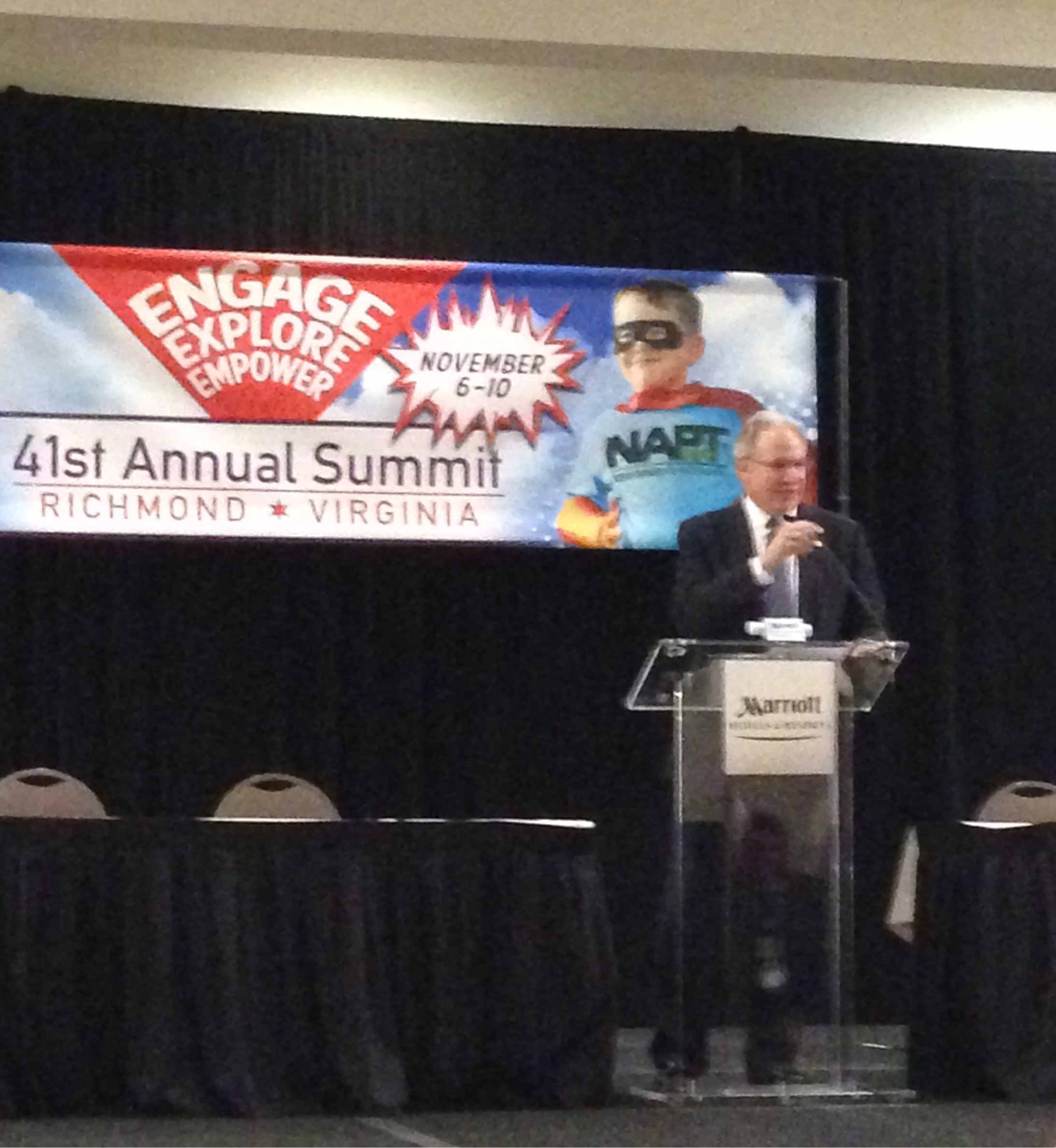On November 8, Safe Ride News was in attendance when NHTSA Administrator Mark Rosekind* addressed school bus industry leaders at the National Association for Pupil Transportation Annual Summit. Administrator Rosekind, while reinforcing the fact that today’s school buses are the safest way to transport kids to school, voiced the agency’s strong support for the eventual goal of equipping all new school buses with lap-shoulder belts.
To be prepared for caregiver questions, CPSTs should take a moment to read the transcript of Administrator Rosekind’s speech. These remarks signal a big change in NHTSA’s stance on the importance of lap-shoulder belts on buses. He stated, “NHTSA’s policy is that every child on every school bus should have a three-point seat belt.” Although Administrator Rosekind did not outline the reasons for this change, it is no doubt based on a variety of factors, including:
- The evolution of available seating technology, which has improved the availability, flexibility, and affordability of lap-shoulder belts for buses.
- Analysis of actual crash data, including the NTSB’s research of bus crashes that occurred in Chesterfield, NJ, and Port St. Lucie, FL, in 2012.
- The fact that the state of California and many school districts now have a track record of using lap-shoulder belts on buses. The testimony of these transporters was a valuable part of the information gathered at a NHTSA daylong forum on this subject, held in July.
While Administrator Rosekind stated that his remarks did not signal an immediate intention to initiate rulemaking on this subject (or his pre-judgement of any possible future rulemaking procedure), he did say that the agency plans to use “all the tools” at its disposal to further this goal. Following the appropriate protocol for such actions, Administrator Rosekind indicated that more research would be initiated soon to inform any further NHTSA actions. He also said that the agency would explore how it could coordinate with other entities to help “overcome the financial barriers to making seat belts universally available to students.”
Mass media coverage of the Administrator’s speech means that many caregivers have become aware of NHTSA’s revised stance, and this is likely to lead to questions and concerns. SRN suggests some basic things to remember:
- Caregivers should not be afraid to let their children ride on school buses that lack lap-shoulder belts. Using compartmentalization as the primary means of passenger protection, school buses have an impressive safety record. Crash statistics show that, even without seat belts, children are far safer riding the bus to school than they are riding in a family vehicle wearing a seat belt.
- Lap-shoulder belts do, however, enhance school bus passenger safety in a crash, especially in a side-impact or rollover collision.
- Transporters who regularly use buses with lap-shoulder belts report a marked improvement in student behavior, which aids the drivers’ ability to attend to safe driving by removing potential distractions.
- Adding seat belts to school buses would remove an obvious gap in our ability to send consistent safety messages to always buckle up.
- When seat belts (lap-only or lap-shoulder belts) are available, they should be worn.
- Preschool-age children on school buses should ride in properly fitted child safety restraint systems.

